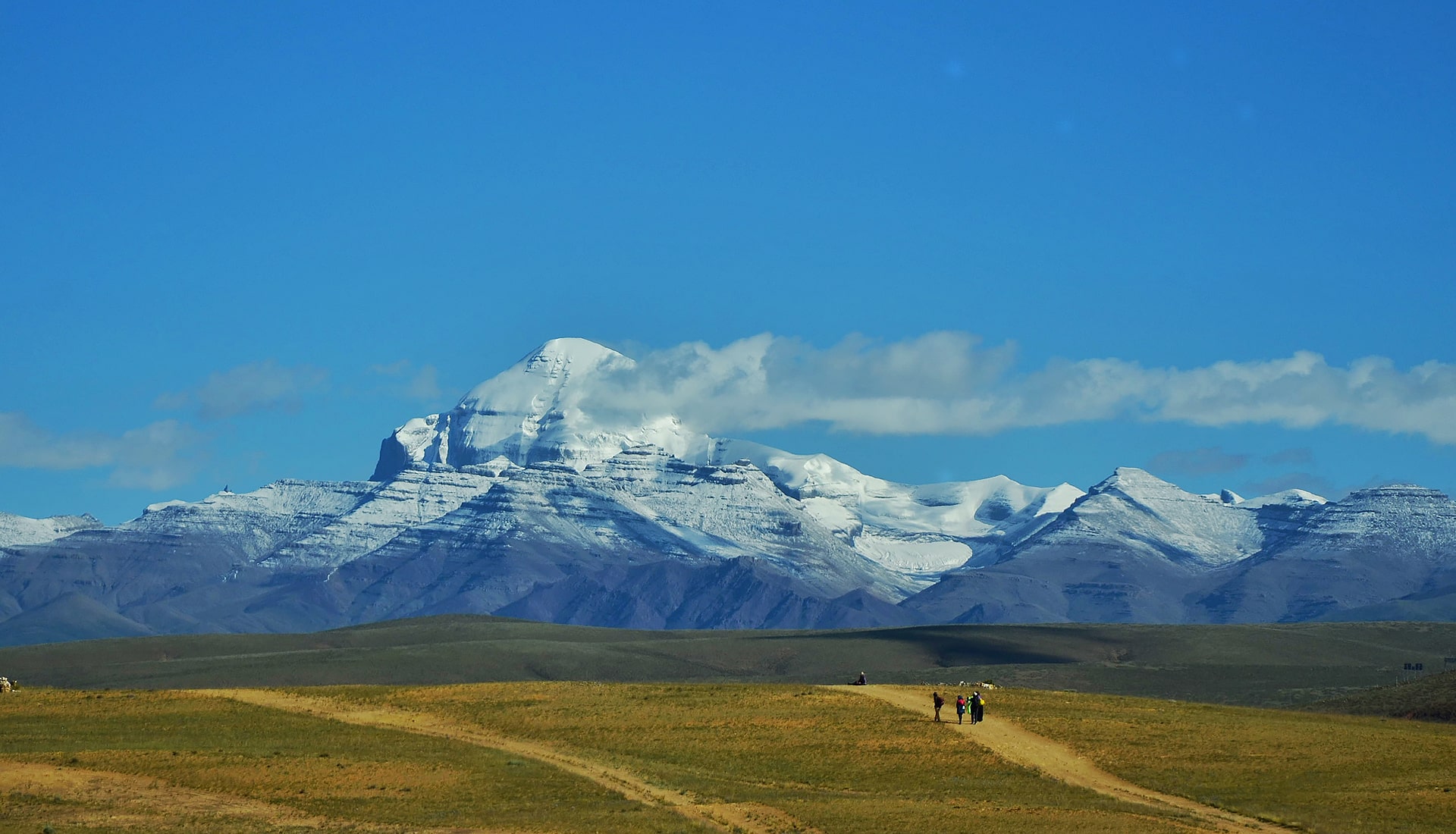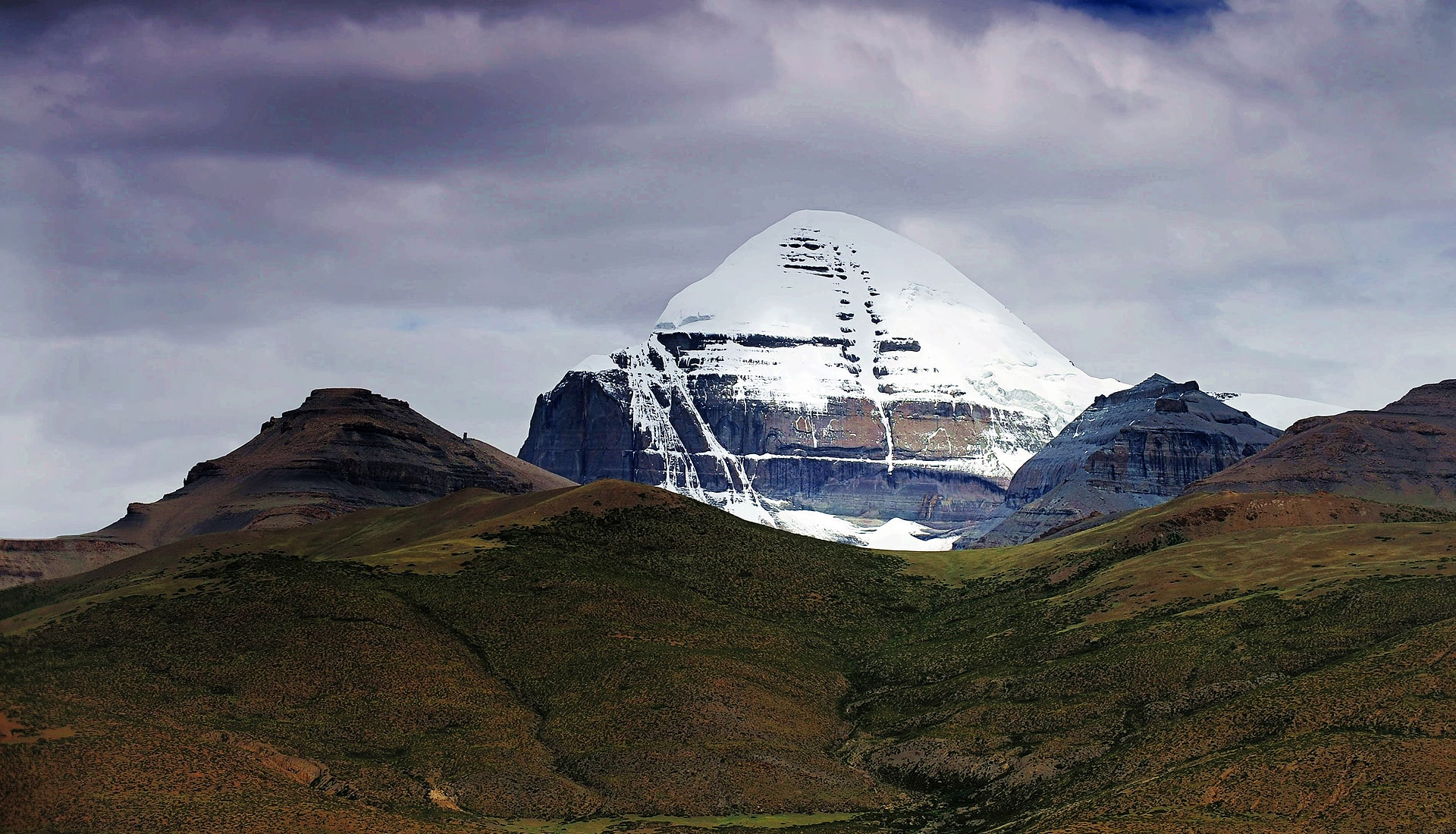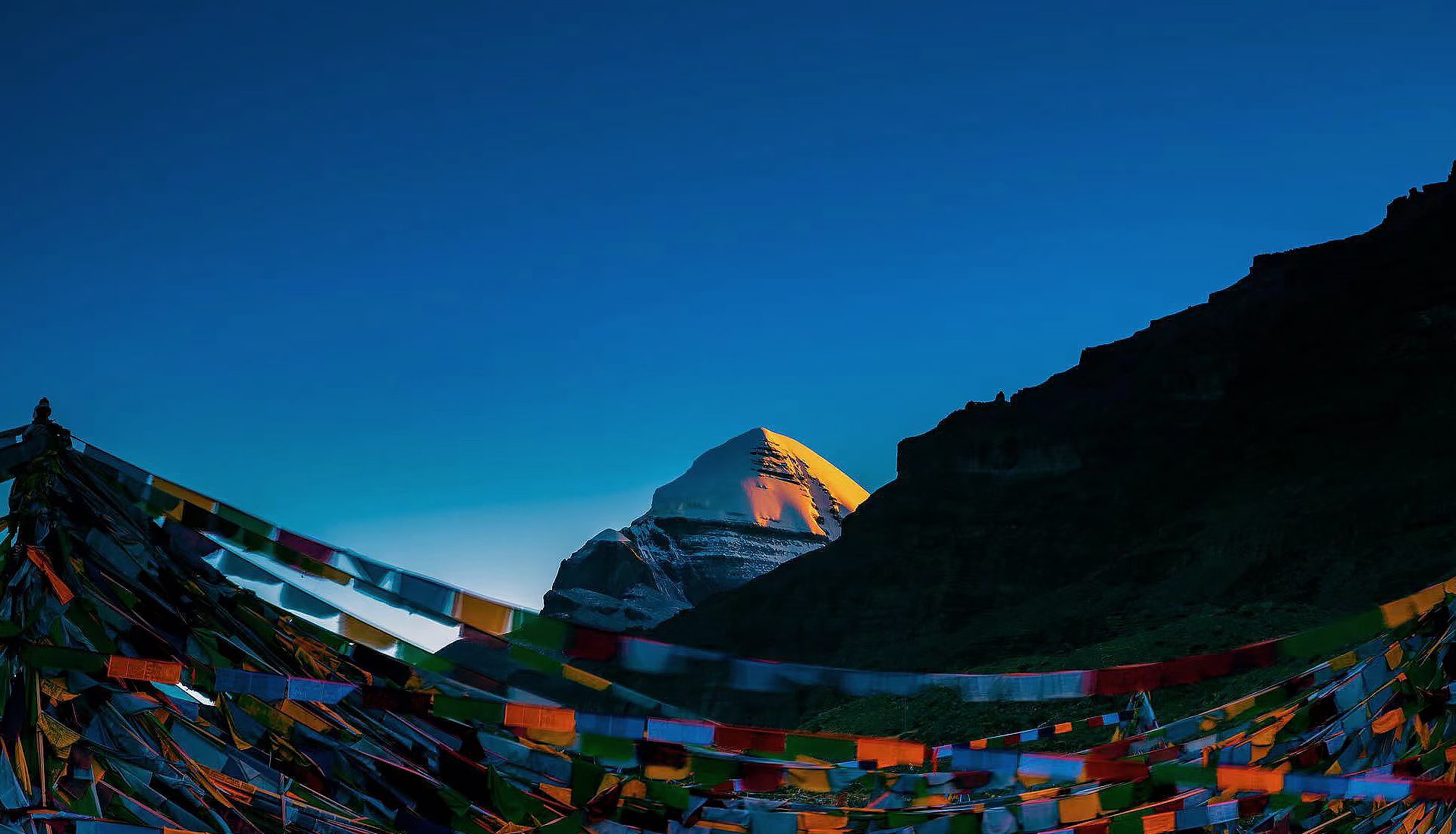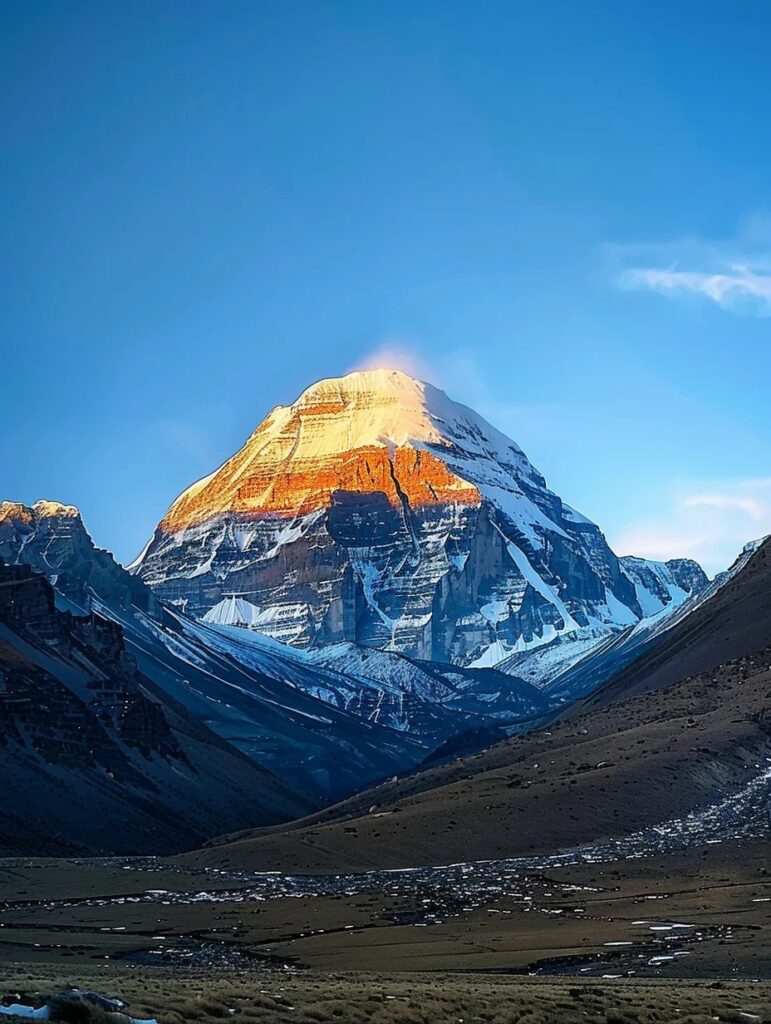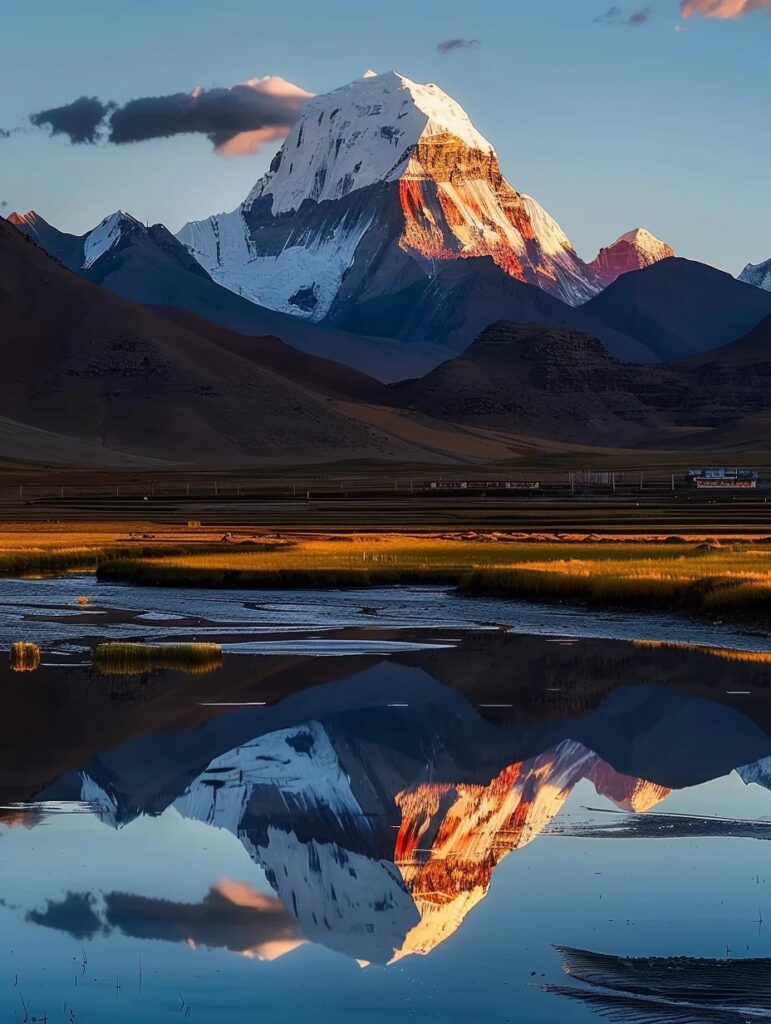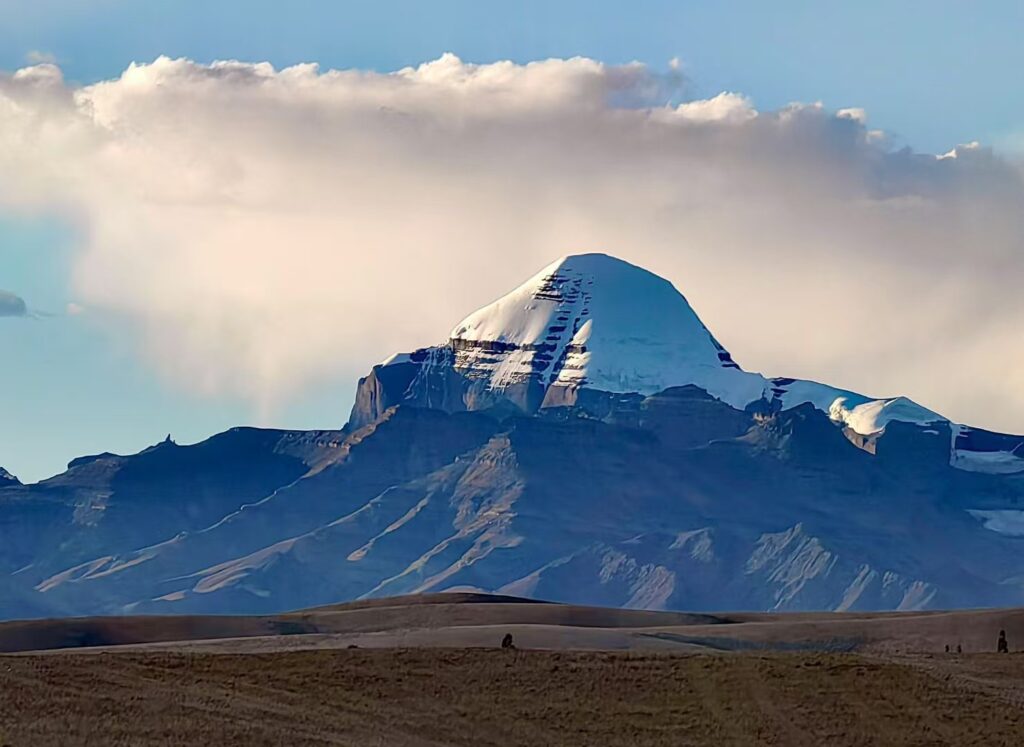Mount Kailash (Gang Rinpoche) – Sacred Peak of Tibet · Center of Four Faiths · The King of Holy Mountains
Mount Kailash, also known as Gang Rinpoche in Tibetan and traditionally identified as Mount Sumeru, is located in Pulan County, Ngari Prefecture, in the Tibet Autonomous Region of China. Standing at 6,656 meters above sea level, it is the main peak of the Gangdise Mountain Range and one of the Four Great Sacred Mountains in Tibetan Buddhism.
Regarded by Hinduism, Tibetan Buddhism, Bon (Yungdrung Bon), and Jainism as the spiritual center of the world, Mount Kailash, together with Lake Manasarovar to its south, is revered as the sacred mountain-lake duo — a holy destination for pilgrims across faiths and nations. Despite not being the tallest peak in the area, its symmetrical, pyramid-like shape, eternal snowcap, and the way it reflects light make it a uniquely divine presence on the Tibetan Plateau.
According to Tibetan Buddhist belief, Mount Kailash is Mount Sumeru, the cosmic mountain at the center of the universe. Even before Buddhism, during the ancient Zhangzhung civilization and the time of Yungdrung Bon, Kailash was called the “Nine-Stacked Swastika Mountain” and was believed to be the dwelling place of 360 Bon deities.
The mountain is also the source of four major rivers in Asia:The Lion Spring River (Indus)、The Peacock River (Karnali)、The Horse River (Brahmaputra)、The Elephant River (Sutlej).
Surrounding Mount Kailash are five historic monasteries, which together form the spiritual framework of the Mount Kailash kora (pilgrimage circuit):Darchen Monastery – the starting point of the pilgrimage、Drirapuk Monastery、Dzutulpuk Monastery、Zhongzha Monastery、Serlung Monastery.
These monasteries are rich in legends and religious art, featuring ancient sculptures, murals, and carvings — preserving centuries of Tibetan spiritual heritage.
Mount Kailash is not just a physical mountain but a spiritual beacon — a symbol of faith, eternity, and cosmic harmony, drawing pilgrims, seekers, and explorers from all over the world.

